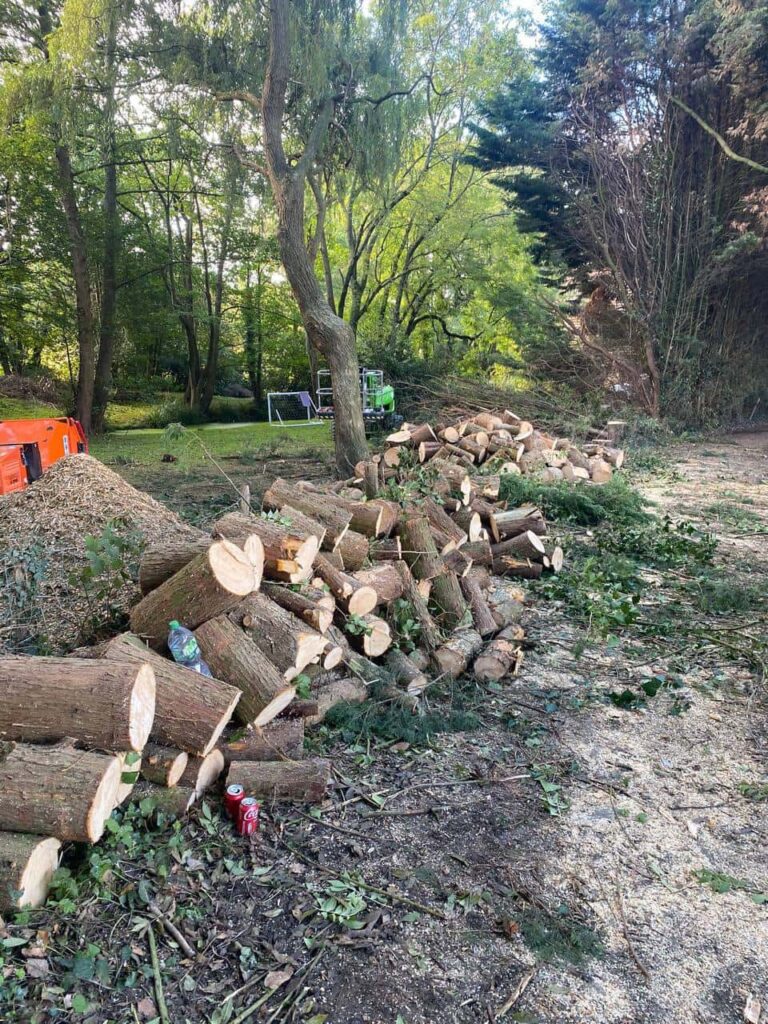Dead Wood Removal Safety Tips: Protecting Yourself and Your Property
Introduction: Dead wood removal is vital to tree care and maintenance, ensuring the health and safety of your trees and property. However, it can be hazardous if not approached with caution and proper safety measures. In this blog post, we’ll provide essential safety tips to protect yourself and your property while removing dead wood.
1. Prioritise Safety Gear:
Before you begin any dead wood removal project, make sure you have the necessary safety gear, including:
- Hard hat to protect your head from falling debris.
- Safety glasses or goggles to shield your eyes from splinters and debris.
- Ear protection to guard against loud noises if using power tools.
- Gloves to protect your hands from sharp edges and potential hazards.
- Steel-toed boots with good traction for secure footing.
2. Assess the Situation:
Evaluate the tree and surrounding area before starting work. Consider factors such as:
- The size and weight of dead branches or wood.
- The tree’s stability and health.
- The presence of utility lines, structures, or people in the vicinity.
- Weather conditions, including wind and rain, can affect safety.
3. Use the Right Tools:
Select and maintain the appropriate tools for dead wood removal. Common tools include pruning shears, loppers, hand saws, and chainsaws. Ensure your tools are sharp, well-maintained, and suited to the size of the branches you’re removing.
4. Plan Your Cuts:
Plan your cuts carefully to avoid accidents. Follow these guidelines:
- Use proper cutting techniques, such as undercutting and top cutting for larger branches, to prevent tearing and ensure a clean cut.
- Make sure the path is clear of obstacles and people before cutting.
- Be mindful of the “kickback” effect when using chainsaws, which can cause the saw to jump backwards.
5. Maintain Safe Distances:
Keep a safe distance from the tree and any falling branches. Create a clear zone around the work area and communicate with anyone nearby about the potential risks.
6. Watch for Dead Limbs Above:
Be cautious of overhead dead branches or limbs that may fall as you work on the lower parts of the tree. Consider removing these upper dead branches first to reduce the risk of falling debris.
7. Use Safety Lines and Harnesses:
Consider using safety lines and harnesses if you need to work at heights. Climbing gear and safety equipment are essential for your protection.
8. Know Your Limits:
Recognise your skill level, and do not attempt dead wood removal tasks beyond your capability. Complex or high-risk jobs should be left to professional tree surgeons.
9. Dispose of Dead Wood Properly:
After removal, dispose of dead wood responsibly. Consider recycling it as firewood, mulch, or for creative DIY projects.
10. Consult Professionals:
Consult with experienced tree surgeons like Earls Barton Tree Surgeons when in doubt or encountering challenging situations. They have the expertise and equipment to handle dead wood removal safely and efficiently.
Conclusion: Dead wood removal is a necessary part of tree care, but it should always be conducted with safety as the top priority. Protecting yourself and your property ensures a successful, hazard-free dead wood removal project. By following these safety tips and seeking professional assistance when needed, you can maintain the health and safety of your trees while keeping your property and loved ones secure.
Call us on: 01604 279 697
Click here to find out more about Earls Barton Tree Surgeons
Click here to complete our contact form and see how we can help with your tree’s needs.

